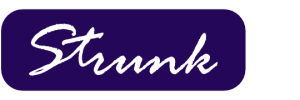How Does a Formal Overdraft Program Benefit Consumers
Formal overdraft programs are prevalent in community banks and consumers have benefited from them for over 30 years. Many articles have been written about the pitfalls and risks that consumers face from overdrafts and some of them are true. In reality, providing a consistent methodology to paying items that create an overdraft benefit both banks and their customers.
Consumers create overdrafts…banks do not. Banks are faced with decisions each morning to either pay a customer’s non-sufficient fund item or return it to the merchant. They also have to decide whether or not to charge a fee or waive the fee. Thirty years ago when formal overdraft programs started, the NSF or Overdraft fee was $15-$20 nationwide. The idea was to charge a fee to deter consumers from writing a check that would overdraw their account. This was a time when debit cards were not used much and checks and ACH items dominated the payments system.
Beginning in 2010, debit card transactions that would overdraw an account could not be authorized at point of sale unless the consumer “opted in” for this service. This was a great idea that came from the Federal Reserve. So, how do formal overdraft programs benefit consumers?
• Allows consumers to decide how they want their bank account handled when it comes to overdrafts
• Reduces returned check charges from merchants
• Allows consumers to take home the groceries or prescription drugs when otherwise their debit card transaction would be denied
• Keeps a bank from discriminating on daily pay and don’t pay decisions
• Keeps a bank for discriminating on waives and refunds
Contact Strunk at 800.728.3116 or email at info@strunkaccess.com to learn more about setting up a formal overdraft process at your bank.



